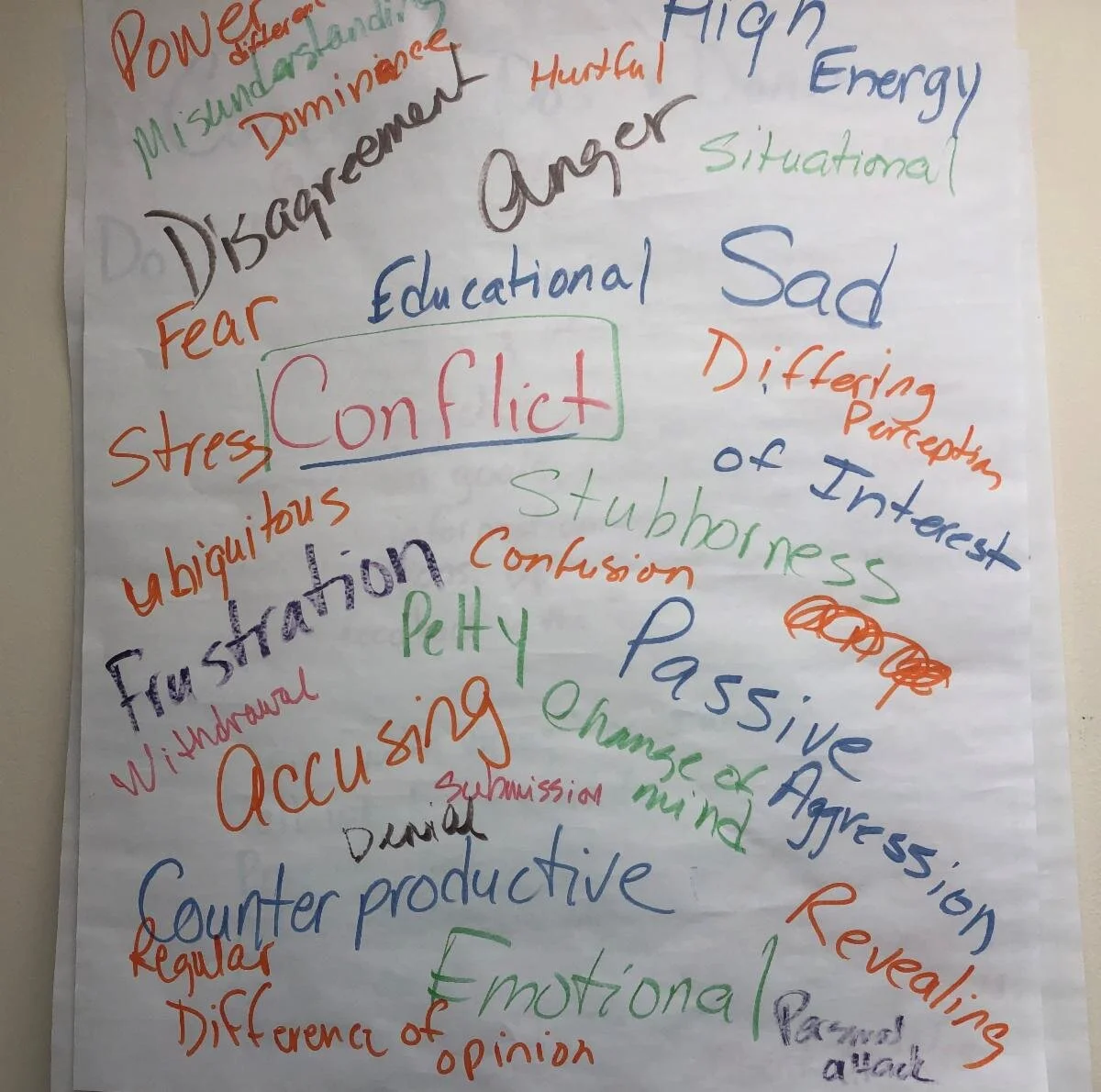WHILE WE ARE KEEPING SOCIAL DISTANCE AND HAVE A LOT OF TIME ON OUR HANDS, LET’S DO SOME CONFLICT RESOLUTION…
NEW ATTITUDE - THE CONFLICT BUBBLE
Use the Conflict Bubble
Let's do some guided imagery now.
Locate the conflict. What do you call it? How do you describe it? Let's give it a name.
Now let's take the conflict and put it into a container. Can you see it? What kind of a container did you choose?
Now that we've got it defined and packaged, let's take it and put it into the conflict bubble in the middle of the table.
How big is the conflict bubble now? Let's leave the conflict bubble right there in the middle of the table, and keep a good eye on it as we go along.
The magic conflict bubble
It's like the magician at the kids party who pulls a coin from the child's ear. But in this case the mediator isn't playing a trick. It's a shift of perspective that is crucial in order to make progress in resolving a conflict. Put the conflict in the middle and separate it from the person.
This is because, fairly often, a conflict between two people becomes associated with the other person--the fully formed and multi-dimensional person. The conflict and the person becomes entwined. We blame the person, as a person, and don't separate their actions, attitudes and mistakes from them as a valuable person. We look at the person and see their part in the conflict, as if they are one and the same.
Observing the bubble as it expands and contracts
In mediation sessions I am often referring to the conflict in the middle of the table. I looks like the conflict is expanding dramatically. or Let's watch language and stop putting fuel on the conflict. or What do you think, have we taken most of the air out of the bubble? It's looking a lot smaller to me now. This imagined object can help to mark progress toward resolution or the lack thereof.
The idea is to be soft on the person and hard on the problem. Soft on the person because you need them to work with you to solve the problem, and you want your conflict resolution partner to be in good shape and not diminished. And hard on the problem, because that's what you want to solve. And if you work together with the other person, you might come up with something wonderful together. Or at least try.
Some tips for using the conflict bubble
You don't need to be involved in a mediation to use the conflict bubble.
Follow the steps above to remove the conflict from the other person. If you find the conflict and the person being merged after a while, do it again. The other person is not the conflict.
Make a list of all the good qualities the person has, remember that they are a full human being.
Draw the conflict bubble and put the conflict into it. There's something remarkable about the artistic process, it opens up your ability to see things differently.
Look for people who are already doing this, they are around. The clues are they never blame, never shame and talk about actions and data and do not mix up these matters with the actual human being.
If you forget everything else, this is one to remember. Separate the problem from the person, put the problem in the conflict bubble. Be soft on the person and hard on the problem. Work on resolving the conflict and watch the conflict bubble deflate or disappear.
Do this:
Watch a video. This one which raises the idea of interests as well as separating people from problem- Workplace conflict resolution
Watch this video from the movie Marriage Story. Write a list about what's great about the other person, If things are really difficult, read it to the other person. Do it, don't keep it to yourself. The list
Watch another video. This is William Ury, world renown conflict resolution and negotiation specialist with lots of ideas including Separate person from problem
Read this article. Separate the person from the problem.
If you missed Day 1 through 18 check out the previous blog posts.
Have a great weekend. Thank your health care worker, cleaner, teacher, store clerk and others who are in public service. Back on Monday.
Thanks Dawn for the conflict bubble, the one in the picture. A gift much appreciated.
Yesterday the planet lost many people-each of them valuable. One was my colleague in the NYC school where I served before I retired. She died of Covid 19. Every life is important. Sandra, we will miss you.



















